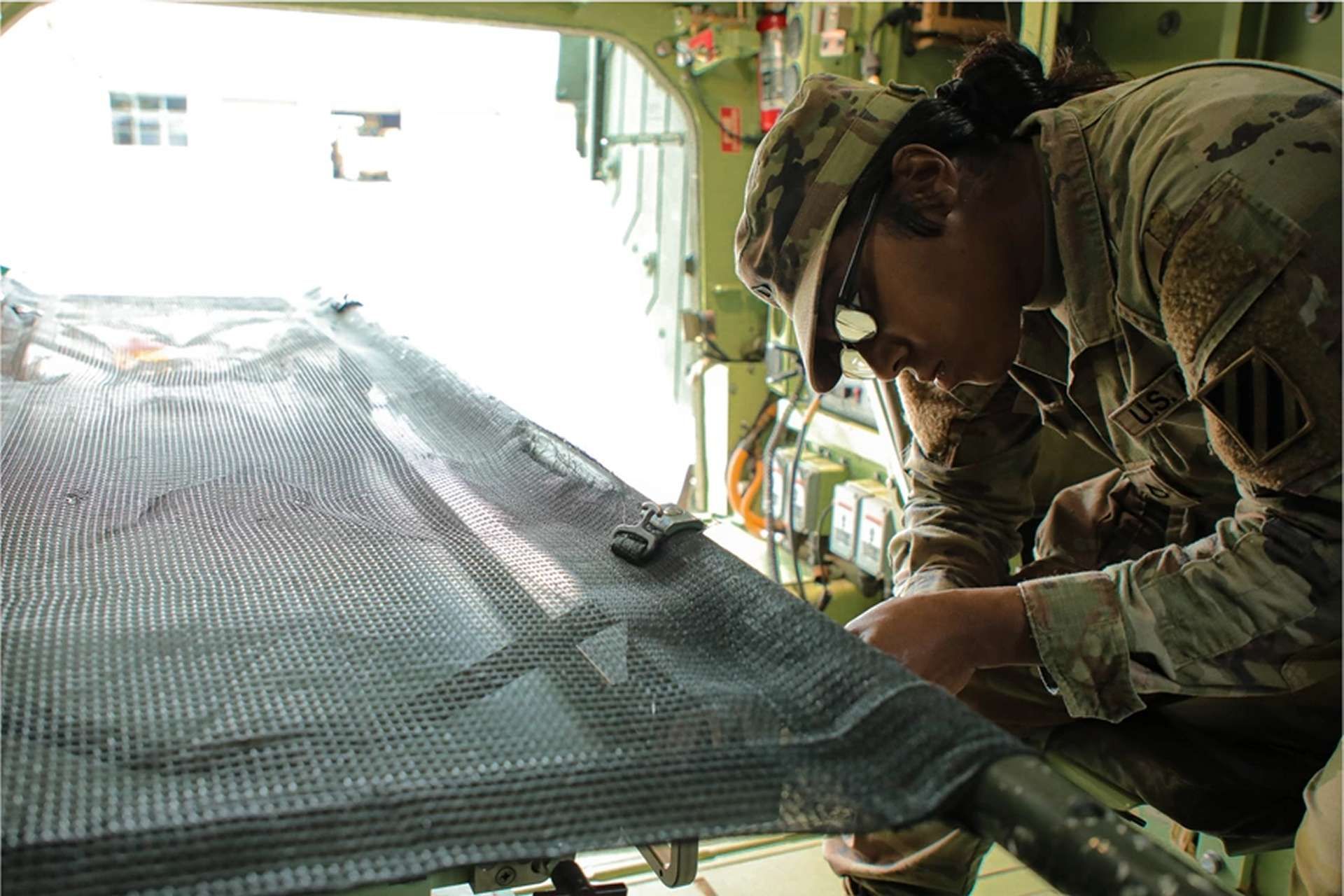Breaking news
United States Replaces Old M113 Ambulance with New AMPV Armored Vehicles.
The U.S. Army is continually updating its equipment to ensure mission success. On May 5, 2024, the medics of the 1st Armored Brigade Combat Team, 3rd Infantry Division received the Army’s new combat vehicle, the Armored Multi-Purpose Vehicle (AMPV), which is set to replace the M113 Armored Personnel Carrier as part of the Army's modernization initiative.
Follow Army Recognition on Google News at this link

An M1285 Medical Treatment Armored Multi-Purpose Vehicle awaits inspection at a motor pool. (Picture source: US DoD)
Sergeant First Class Benjamin Proctor, a medical platoon sergeant with the 1st Armored Brigade Combat Team, highlighted the advantages of the new vehicle, particularly its spacious interior. "The biggest advantage of the AMPV is the space it offers medics to move around patients," noted Proctor. The vehicle can accommodate four litter patients or six ambulatory patients, an improvement over its predecessor, the M113.
The brigade's medical units now operate the M1284 Medical Evacuation Vehicle (MEV) and the M1285 Medical Treatment Vehicle (MTV) variants of the AMPV. The AMPV offers a 78% increase in interior volume compared to the M113, as well as improved armor and speed capabilities. Its advanced radio system also enhances communication with troops in the field.
The Armored Multi-Purpose Vehicle (AMPV) is a modern combat vehicle designed to meet the diverse needs of the battlefield. Equipped with various armaments, the AMPV can be fitted with M249 5.56mm machine guns, M240 7.62mm machine guns, M2 12.7mm machine guns, as well as MK-19 40mm automatic grenade launchers and 120mm mortars, offering considerable flexibility in firepower. Its all-welded aluminum structure and explosive reactive armor at the front and on each side of the hull provide robust protection against ballistic threats and explosions.
Primarily used by the U.S. armed forces, the AMPV was designed and manufactured in the United States. Weighing between 34,000 and 36,000 kg, it balances protection and mobility, reaching a maximum speed of 54 to 61 km/h. Its range of 362 km allows it to cover long distances without frequent refueling.
The vehicle is equipped with essential accessories for modern operations, including an NBC (nuclear, biological, chemical) protection system, air conditioning, night vision, and a fire suppression system. These features ensure that the crew can operate effectively in hostile environments.
The AMPV is designed to transport a crew of two and six soldiers in its APC (Armored Personnel Carrier) version. Its dimensions, with a length of 6.4 meters, a width of 3.2 meters, and a height of 2.2 meters, enable it to carry both troops and equipment while ensuring optimal protection and rapid response capability on the field.

An old M113 APC was used as a base for old American ambulances ( Illustrative photo). ( Picture Source: Army Recognition)
Proctor pointed out the limitations of the M113, which, although effective for patient transport, was too cramped for medical treatment in transit. "In these vehicles, my medics can move around the patient, take vital signs, stop bleeding, perform all their medical interventions en route to the next level of care," he explained.
The AMPV improves the ability to shoot, move, and communicate. Medical platoons are now equipped with short-barrel M249 machine guns that can be used through the vehicle’s gunner hatch, providing defensive capabilities during patient transport.
The Army's doctrine for role-one aid stations, the primary healthcare providers on the battlefield, includes triage, resuscitation, and stabilization. The M1285 MTV is designed to facilitate these functions effectively. "When they [M1285 MTV] travel together, they can form a role-one aid station," Proctor said. The vehicle is equipped with a deployable tent and tarps to quickly set up a field aid station.
The medical variants of the AMPV, including the M1284 MEV and M1285 MTV, are equipped with air conditioning units to cool patients, and the MTV even includes a refrigerator for blood storage. "We can handle any type of trauma, even the most severe," added Proctor, detailing the vehicle's capabilities in managing serious injuries and medical conditions.
As the 1st Armored Brigade Combat Team prepares for an upcoming deployment, the new AMPVs will be crucial in enhancing their medical response and treatment capabilities. "They are leaps and bounds better than the M113, and I am glad we have them," concluded Proctor. "We will learn how to implement them and we will learn a lot about them when we deploy on our upcoming rotation."

A combat medic secures a litter in an Armored Multi-Purpose Vehicles (AMPV). ( Picture Source: US DoD)


























